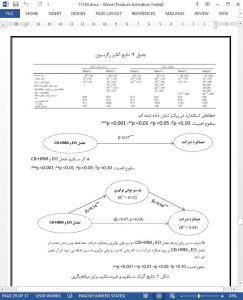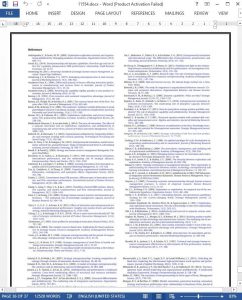Abstract
This paper explores critical questions about the antecedents and performance outcomes of innovation ambidexterity. Specifically, while prior research has acknowledged that entrepreneurial orientation (EO) and HRM can each influence ambidexterity, little is known about whether and how EO and HRM interact to affect innovation ambidexterity and whether innovation ambidexterity is a mechanism through which EO and HRM together contribute to firm performance. Building on the dynamic capability view of ambidexterity and the interplay of EO and HRM, we propose that (1) the interaction between EO and capability-based HRM facilitates innovation ambidexterity, and (2) its relationship with firm performance is mediated by innovation ambidexterity. A sample of 264 industrial firms from China is used to test our theoretical model. The results provide support for the significant effects of the interaction between EO and capability-based HRM on innovation ambidexterity. Further, the results suggest innovation ambidexterity acts as an effective mechanism through which EO and capability-based HRM together contribute to firm performance. The theoretical and managerial implications of our findings are also discussed.
1. Introduction
Operating in changing environments requires firms to explore new knowledge and resources needed for radical innovation while simultaneously exploiting existing knowledge and resources to enable incremental innovation (Andriopoulos & Lewis, 2009; He & Wong, 2004). Innovation ambidexterity is an emerging concept which captures the management of these dual endeavors; its importance stemming from its influence on firm superior performance (Gibson & Birkinshaw, 2004; He & Wong, 2004) and market success (Atuahene-Gima, 2005; O'Cass, Heirati, & Ngo, 2014). Conceptualized as a firm's ability to simultaneously reconfigure new resources leading to discontinuous innovations (exploration) and to refine existing resources leading to incremental innovations (exploitation) in a balanced way (He & Wong, 2004; Kortmann, 2014; Lin, McDonough, Lin, & Lin, 2013; March, 1991), innovation ambidexterity is, however, difficult to develop and implement in practice.
5.3. Limitation and direction for future research
While our research provides insights into the relationships between, EO, capability-based HRM, innovation ambidexterity and firm performance, as with most research, it has several limitations that offer avenues for future research. First, our research highlights the importance of investigating the interaction between EO and capability-based HRM in developing innovation ambidexterity. We examined practices related to capability-based HRM. However, future research could explore different bundles of HRM practices across different functional areas and domains of HRM which might have different interactive effects with EO and its impact on ambidexterity. Similarly, future studies might also validate our findings with distinctions of different EO dimensions of innovativeness, proactiveness and risk-taking.











